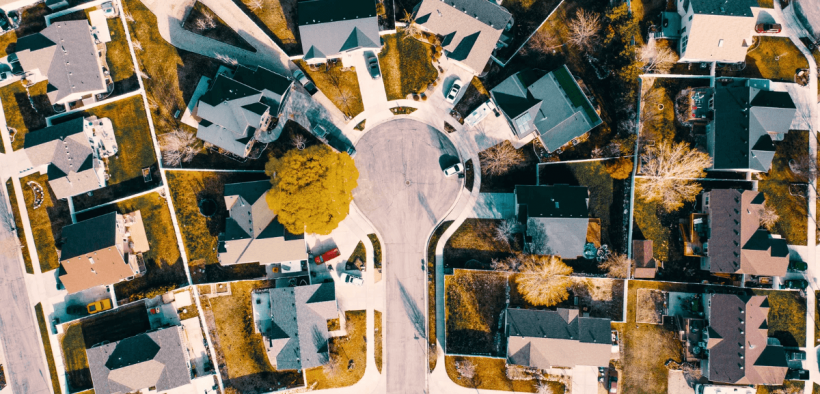Crucial Connections
Share

Better connected homes and communities, enabled by smart technology are the key to tackling the major challenges ahead for social housing, says Civica’s Neale Walsh
As the ALP government and Community Housing Providers prepare to deliver more housing stock to the market, we must not forget to consider the human element involved. That is, it’s not just about delivering more houses but more importantly creating homes for those most in need within our community.
If we’ve learnt anything from the past two years, it’s the power of collective action during a crisis. The way communities and local authorities pulled together during the pandemic showed the real impact of working together for the collective good.
Technology is key to bridging the gap and as governments and community housing providers looking to provide more, it’s imperative that this doesn’t come at the expense of what’s most important, the social impact and well-being of the tenant.
Technology has played a crucial role in this. And not just long-established technology such as web, mobile apps and video conferencing – new and emerging technologies from artificial intelligence, augmented and virtual reality, to connected devices and machine learning now play a vital role in moving our public services forward in 2022 and beyond.
Check out: Stop applying analogue solutions to digital challenges
A boost for collective intelligence
In the housing sector, which faces fresh challenges every day – from building safety to increasingly long waiting lists for properties, the pressures of net zero and the current cost of living crisis – digital technologies can make a real difference.
Technology can help meet rising expectations across social housing. In a recent global Civica survey, as part of our latest Greener homes, Connected communities Changing Landscape report, leaders across housing agreed – with more than 90% stating that AI-assisted technologies, connected devices and machine learning would be more and more relevant in the future.
There’s no doubt that AI and smart devices will be vital to help the housing sector. From spotting opportunities for earlier intervention and identifying variations in service use to optimise costs, ultimately this will free up frontline workers to focus on services that require more personal contact.
Data is the crucial component of how we connect the dots and build better housing services. In our connected world, data about how we travel around cities is helping city planners to optimise mobility networks and community infrastructure.
The good news is housing providers have all this data to hand, with 78% of leaders confirming in our recent survey that the quality of their data and processing is good. It’s through better sharing this asset that we’ll be able to stop more issues before they start.
Connect to the future
We are just at the cusp of how connected devices can inform and give us insight to make better decisions in the future. In our latest Perspectives* report, Connect to the future, we uncovered some positive ways this is already helping. For example, to support vulnerable residents, sensors around a property can send information about patterns of activity or if medication is being taken, helping older adults to live independently.
When it comes to safety in the home, the tech is being used to monitor temperature, humidity and CO2 levels in homes to help improve the welfare and safety of residents. They can help us make firmer predictions for future housing needs by using information to provide early alerts and optimise maintenance.
In housing management, connected home appliances such as boilers can send data which, combined with analytics, predict need for maintenance, avoiding costly routine and invasive inspections. These can also help residents and landlords predict the cost of energy use and take steps to improve efficiency and reduce fuel costs. While in Australia, where two thirds of homes have smart devices, they are helping to manage and reduce water demand.
In time, we will gain more control by interacting with new technology better to help us control our surroundings. For example, smart locks can be operated remotely using a smart phone to grant access for repairs – and if a resident loses their keys, they can get into their home with remote access.
For crucial areas like leak detection, sensors placed on pipes or in bathrooms can detect water escape or overflowing baths and activate stop-cocks before major damage is caused. Smart smoke alarms and carbon monoxide detectors can issue alerts and contact emergency services or landlords.
Connected devices will play a crucial role in better listening to resident voice, improving the experience by adding smart tech such as an Amazon Alexa to properties so residents can remain in contact and get 24/7 advice and information.
Check out: Leveraging the power of data and digital for the next gen public sector
Joining up the dots
But despite so many use cases in housing, we’ve not yet realised the full potential of this technology. The catalyst for this will be connecting wider networks of devices from the individual, their home and the wider community to create an ‘internet of us’. Much of this value will come from building citizen trust in sharing their data more regularly for everyone’s benefit.
The good news is that most current uses for connected devices focus on enhancing existing products and processes rather than rethinking them. There are numerous benefits for the housing sector in embracing these connections – for safer, greener, more resilient homes, and ultimately better engaged and empowered residents.
Neale Walsh is Director, Housing & Strategic Engagements APAC at Civica










Today’s Pick
11th Annual Aus Goverment Data Summit
April 1, 2025
7th Annual NZ Government Data Summit
May 7, 2025
3rd Public Sector Comms Week
May 14, 2025
Subscribe
We send emails,
but we do not spam
Join our mailing list to be on the front lines of healthcare , get exclusive content, and promos.
AI appointment Australia Australian boost boosts business businesses covid-19 cyber cyber attack cyber security cybersecurity data data breach data management defence Digital employment enhance enhances fraud funding governance government grants infrastructure Innovation Lockdown management new zealand NSW NZ online privacy public Public Sector queensland renewable energy scams security Social Media Technology telecommunications victoria
-

Understanding and building your digital strategy
Digital Government, Opinion
-

Featured Leader: Jamie Morse on multi-channel strategies for communication
Communications, Featured Leader
-

Featured Leader: Tegan Tembe of NSW Treasury on creating solid planning strategies and processes
Featured Leader
-

Wirraka Maya Health Service improves patient care with My Health Record
Learning
Show More-

Effects of ineffective communication in the workplace
Communications, Personal Development
-

7 ways you can enhance your personal development skills
News, Personal Development
-

5 advantages of working in the public sector
News, Personal Development, Professional Development
-

7 causes of communication issues in the workplace
Communications, News, Personal Development
Show MoreLast Viewed